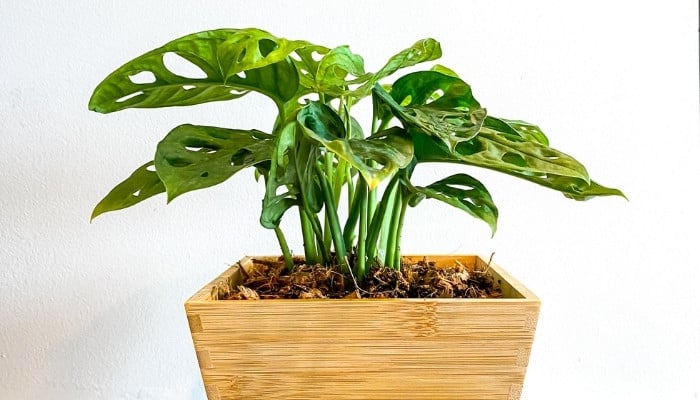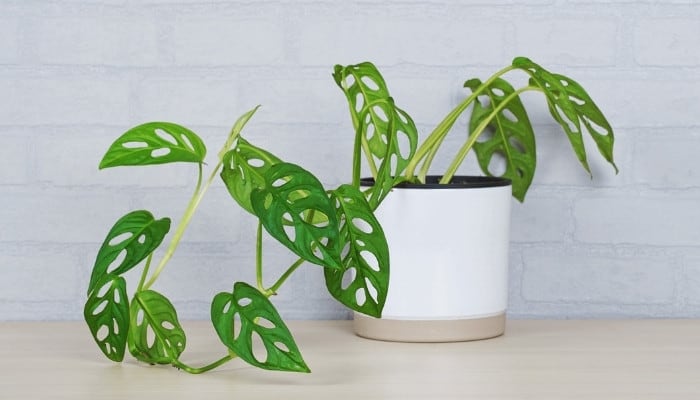Monstera obliqua, known as the exotic tropical plant, stands out for its broad and alluring leaves, and some variations even have unique holes in them.
There is little doubt that these unusual plants are much sought after by plant aficionados, but most obliqua admirers find it tricky to get their hands on one.
Why are Monstera obliqua so expensive? Monstera obliqua plants are quite expensive because they’re extremely rare. Because of their slow growth rate, they are difficult to propagate, and they are typically only grown by specialized growers with plenty of experience and knowledge regarding the plant.
There’s more to the Monstera obliqua than meets the eye. Between the rare look and different varieties, there’s a lot to appreciate about this South American climber.
Let’s take a closer look at the reasoning behind the high prices and the different cultivars that are now available.
6 Reasons Why Monstera Obliqua Are So Expensive
When the price of a commodity goes up, one doesn’t have to look further than the supply and demand chain to figure out why. This applies perfectly to the Monstera obliqua.
The high demand for the plant and shortage of supply drive the costs through the roof.
But if its beauty and outlandish leaves make it a must-have in any tropical garden, why are there so few of these plants available in the market?
#1 Very Rare Plant
Although the Monstera obliqua grows across Central and South America, it’s quite a rare plant to find.
It requires very specific conditions to grow and thrive. This might explain why sightings of the plant in the wild are few and far between.
A 1977 book called A Revision Of Monsteras by Michael Maddison puts the number of sightings to 17.
Even if that number is too conservative by many estimates (House Plant Hobbyist puts the number at 710), the plant is still elusive in nature, and neither botanists nor native trackers can find it easily.
#2 Difficult To Propagate
If the plant finds it hard to establish in the rich soil of the Amazon Rainforest, this tells you something about its growing conditions.
Although in theory you can take a cutting and use it to start a new plant, in reality, this process is quite difficult and more complicated.
Most plants you grow from a cutting will develop roots and start a new plant in a short time, but not the Monstera obliqua.
It takes weeks on end for the first roots to emerge. From then on, you’ll need to coax more roots to grow by adding peat moss, compost and lots of water in addition to being very patient.
The more roots the cutting develops, the higher the chances of its success.
#3 Slow-Growing Plant
It’s not just the roots that can make or break the plant. Even with a healthy root ball and ideal growing conditions, the Monstera obliqua is still difficult to grow.
One reason for that is the long time it takes for the foliage to reach full maturity.
The first leaves could take anywhere from 12 to 18 months to fully develop.
Some experts recommend trimming the vine regularly to encourage new growth and allow the leaves to emerge much quicker.
#4 Only Grown By Specialized Growers
The length of time it takes to propagate and grow a single Monstera obliqua discourages most people from attempting this difficult feat.
This is why only specialized growers with the expertise and know-how are willing to undertake it.
Most people wouldn’t find it too exciting to stare at a bare cutting for months on end while they wait for the leaves to make their first appearance.
Since growing the plant in large numbers has so far proven to be futile, most growers steer clear from the Monstera obliqua and leave it to the specialized growers.
#5 Private Collectors Are Willing To Pay High Prices
When there’s high demand for a plant and the growers can’t make new plants fast enough, prices tend to go up.
Because of its rarity and unique appeal, private collectors are willing to foot a large bill just so that they could get their hands on it.
Even a cutting of the rare climber could cost you up to $100 a piece. That puts the Monstera obliqua beyond the budget of most people.
#6 Increasing Popularity
The last reason why the Monstera obliqua has such a steep price tag is that more and more people want to add it to their collection.
This, after all, is a tropical plant that is hard to come by in its native habitat. So the allure of the plant and the temptation to grow it in one’s tropical garden increases exponentially.
The good news is that because of the high demand, we’ll likely see this plant become more widely available in the near future, and prices will eventually come down.
Varieties of Monstera Obliqua

Rare as it is, the Monstera obliqua has quite a few varieties. Each grows in a different Latin American country, and the variety is usually named after that country.
Some of these varieties are:
- Monstera obliqua ‘Brazil’
- Monstera obliqua ‘Peru’
- Monstera obliqua ‘Bolivia’
- Monstera obliqua ‘Colombia’
What’s the Difference Between Monstera Obliqua and Monstera Adansonii?
Both the obliqua and the adansonii are Monstera plants, but there are quite a few differences between them.
To help you distinguish between the rare obliqua and the more common adansonii, here are the main features of both and how they differ.
- Leaves: Since both species can have holes in the leaves, the only difference is how thick the leaves are. The obliqua leaves are often thin, almost paper-thin. If the leaves on the plant are more than a half-inch thick, you’re looking at an adansonii.
- Holes: The holes on the leaves follow different patterns depending on the species. For the adansonii, the holes are usually narrow and far in-between. The obliqua has more frequent and larger holes.
- Stolons: The obliqua grows stolons, which are runners that help the vine latch on to walls and tree branches. Adansonii plants don’t have such runners.
Related Questions:
Is Monstera Acuminata Rare?
Although not as rare as the Monstera obliqua, the Monstera acuminata doesn’t have a big presence online. It’s not often that you’ll find someone offering to sell this rare plant on the internet.
How Big Do Monstera Obliqua Grow?
The size of the mature M. obliqua varies depending on the growing conditions. On average you can expect it to reach about 4 feet high.
Just remember that because it is a very slow grower, it may be years before the plant reaches its full size.
Conclusion
The Monstera obliqua plant is very rare both in the wild and in nurseries.
This rarity, coupled with the difficulty to grow, drives the prices of the tropical climber up the roof and makes it very hard to get.

